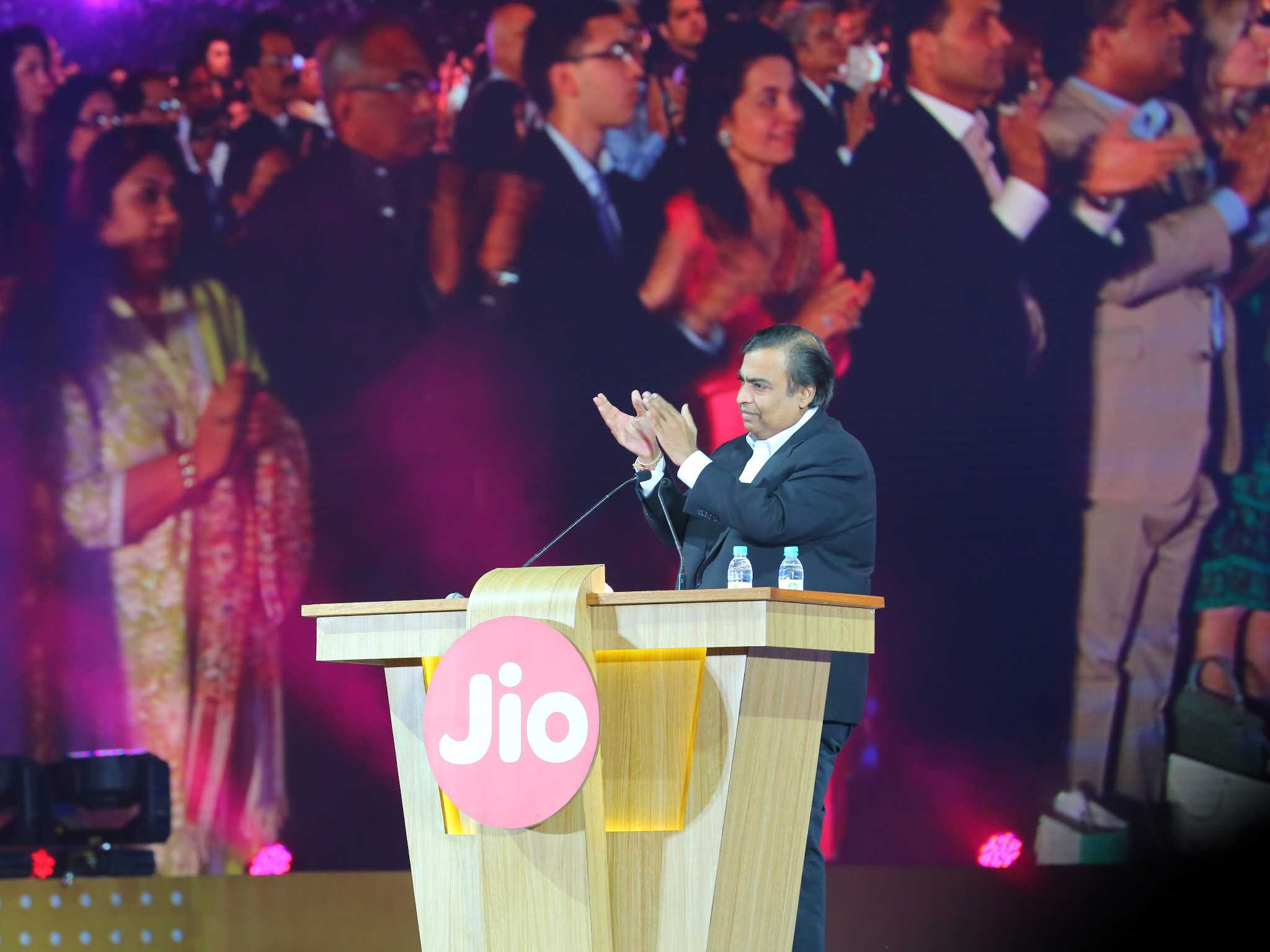Google has teamed up with India's telecom behemoth Jio over a custom Android version tailored for entry-level phones.
Earlier this month, Google invested $4.5 billion in India's telecom giant Jio Platforms to pick up a 7.7% stake in the venture. The deal is the latest in a string of investments that kicked off with Facebook back in April, with the social networking site investing $5.7 billion in Jio to acquire a 9.9% stake, becoming the largest minority stakeholder.
In total, Jio Platforms raised $20.2 billion over the last three months from 13 investors by selling a 32.9% equity stake. Jio Platforms is a wholly-owned subsidiary of Reliance that includes the telecom carrier Jio — which has amassed nearly 400 million subscribers — and a suite of digital content services. Here's what you need to know about Jio, and what Google's investment in the venture means for entry-level devices in India.
The rise and rise of Jio
Jio's story dates back to 2010, when a little-known service provider called Infotel Broadband Services Limited (IBSL) shelled out $2.7 billion to acquire spectrum across the country. Shortly thereafter, Reliance Industries — an Indian conglomerate that has holdings in petrochemicals, textiles, and natural resources — picked up a 95% stake in IBSL, forging its path into the telecom sector.
On the back of IBSL's spectrum and a $20 billion investment in 4G infrastructure, Reliance Industries launched Jio in 2016, becoming India's first nation-wide 4G network. At the time of Jio's debut, 4G data plans were costly and the coverage was spotty at best. Carriers like Airtel and Vodafone offered 4G services in a few regions in India, but neither network had access to nation-wide spectrum.
Jio was able to use that to its advantage, but the reason for its success is down to its affordability. Reliance effectively gave away several petabytes of cellular data for the first six months, allowing the carrier to amass over 100 million subscribers in that time. Even when it started asking customers to pay for its services, monthly plans started off for just ₹149 ($2) for 300MB of data and ₹999 ($13.35) for 10GB of data.
Thanks to Jio, hundreds of millions of Indians were able to access the internet for the first time.
The aggressive pricing along with nation-wide 4G availability allowed Jio to swiftly rise up the ranks in India, and the carrier now has nearly 400 million paying subscribers in the country. Jio's core tenet of affordability continues to this day, with the carrier's base plan providing 56GB of 4G data for just ₹249 ($3.35) a month. The introduction of Jio transformed India's telecom segment, and the carrier paved the way for hundreds of millions of Indians to go online for the first time.
From the very beginning, Jio had a robust digital suite of services that include a video streaming service, audio streaming platform, messaging client, video conferencing service that recently made its debut, news aggregator, cloud storage, digital payments service, and even a web browser.
Jio is now making its foray into online grocery deliveries via JioMart, which leverages local retail stores to fulfill orders. Jio already has a huge userbase, so it is now using its scale to push its own services. Facebook's investment in Jio sees WhatsApp partner with JioMart for online transactions. That's a win-win scenario for both brands as it finally allows WhatsApp to monetize its platform, and Jio gets access to a broader userbase for its service.
Digital content services is just one play for Jio; the carrier is investing in everything from mixed reality — via Jio Glass — to a homegrown 5G solution, edutech, and more.
Where does Google fit into all this?
Jio already has a dominant share in the entry-level segment, with the carrier teaming up with KaiOS to deliver affordable devices with access to the likes of Facebook and WhatsApp. Jio sold over 40 million phones with KaiOS, and it's clear that Google is now looking to get a share of the action.
Google says it is working with Jio to create a custom Android version tailored for entry-level devices. Google already has a platform in this category in Android Go, but it has failed to attract mainstream attention. We don't have a lot of details on how the custom Android OS that Google is creating with Jio will be different from Android Go, but what we know is that it will have access to Play services.
The partnership with Jio lets Google bring the Play Store to $30 phones.
Partnering with Jio gives Google access to the sole category in India that it doesn't already dominate: the sub-₹5,000 ($67) segment. Even though Android Go devices like the Nokia 1 and Redmi Go launched to much fanfare in India, they debuted at over ₹5,000, making them inaccessible to a swathe of the audience. For context, Jio's KaiOS powered JioPhone cost just ₹1,500 ($20), and the carrier essentially gave the phone away provided customers continue service for three years.
The JioPhone 2 is available for ₹2,999 ($40) and has a Qwerty keyboard, 2.4-inch screen, 4G connectivity, access to Jio's suite of digital content services, Facebook, WhatsApp, NFC payments, and even Google Assistant integration. India is one of very few markets left where hundreds of millions of users are yet to make the switch to a smartphone, and more often than not, cost is the main barrier to entry.
Teaming up with Jio gives Google the best chance at getting the Play Store and other Google services available to an even wider audience in India. Google CEO Sundar Pichai said three years ago that smartphones need to come down to $30 to boost adoption in the country. Jio has proven that it is able to do just that with its KaiOS-powered devices, and by teaming up with the carrier, Google may finally gain a foothold in this segment.
It's a win for customers as well, because they get to access Play services and Google's robust suite of apps. While KaiOS provides select Google services like YouTube and Google Maps, a custom version of Android tailored for entry-level devices will offer tighter integration with Google services and access to thousands of apps.
Jio lowered the barrier to entry for internet connectivity for hundreds of millions of Indians. By partnering with Google, it is now looking to do the same with smartphones.



0 Response to "You Can See More: What is Jio and why did Google invest $4.5 billion into it?"
Post a Comment